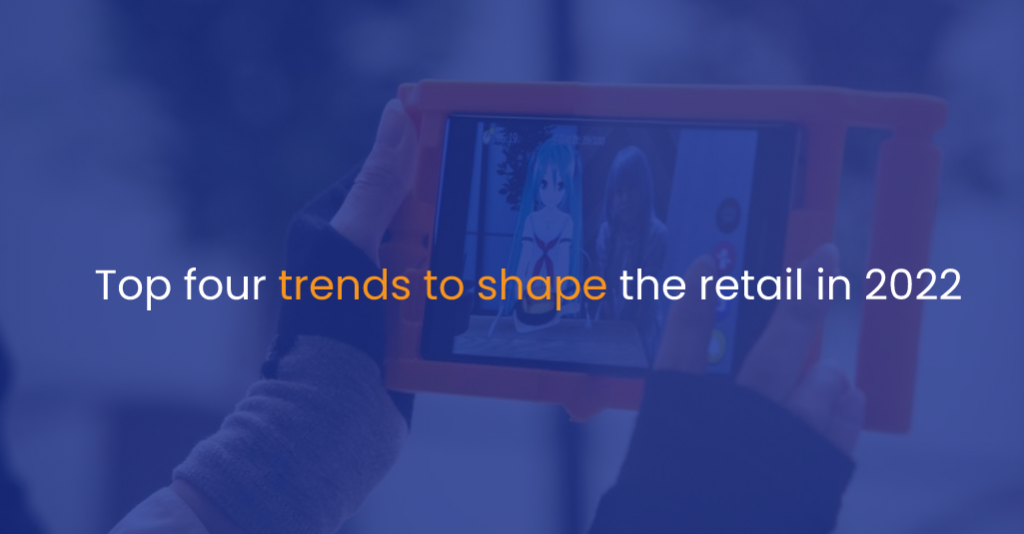2021 has been a worse year for many in the retail business than 2020. With substantial adjustments in consumer spending occurring daily, and increasing tiredness with managing the pandemic’s impact, 2017 is another year that most will be glad to put behind them.
Much is undetermined in the year 2022. Despite the uncertainties, the pandemic has accelerated trends in the retail business, with some of them expected to continue to have a significant influence in 2022.
Conscious Consumers and The Environment
To maintain brand relevance in 2022 and beyond, retailers must change with the consumer. Brands must demonstrate their culture and mission.
Conscious consumerism, which has been influencing consumer behavior for some years, is still a formidable force.
According to our findings, 90% of consumers are more concerned about sustainability than they have ever been.
Customers are increasingly choosing environmentally friendly items, therefore businesses have been urged to make sustainability a top focus.
The resale market has been fueled by a rising awareness of the limited nature of virgin materials and the critical role that the circular economy will play in reducing retail’s environmental effect.
According to ThredUp, the worldwide market for fashion resale is predicted to treble to $77 billion by 2025, with growth rates 11 times faster than traditional clothes retail.
With a slew of new platforms coming up to capitalize on the trend, resale will undoubtedly rise dramatically in 2022, not just in fashion but also in other industries such as homewares and electronics.
Customers in 2022 will expect enterprises to be self-sustaining.
Social Commerce and Live Streaming
The social commerce paradigm, which is deeply integrated commerce that meets customers where they are and is non-disruptive to their experience, will extend to new platforms and sectors in 2022.
Social buying, the fastest expanding sector of e-commerce, will shape how and where we purchase in 2022, following a record year for online shopping in 2021. “Any platform with an audience” is anticipated to begin monetizing that platform through “commerce and shoppable content.”
Live-streaming, the opportunity to purchase a highlighted product on a live-stream video, is at the forefront of shoppable content.

By 2028, the market for live streaming is expected to have grown to over $224 billion USD. Installs for live selling applications increased by 40% from August to October 2021, compared to the previous three months. He describes technology as a very valuable approach for businesses to engage with people, rather than merely a sales channel as the layer between entertainment and shopping fades away.
Hybrid Retail
We may expect most shopping trips to begin online in 2022, but that does not imply they will always end there. In many circumstances, the greatest and most convenient destination for an internet buying experience is a nearby physical store.
Smaller shops are increasingly developing ‘hybrid’ retail formats, making use of the internet’s ability to supplement their physical store.
To improve the customer experience, an omnichannel approach might include in-store shopping appointments. In today’s retail environment, in-store has evolved into a sales channel that works in tandem with Instagram, TikTok, and the internet shop.
Consumers prefer hybrid-shopping over solely online purchasing, with 48% choosing hybrid-shopping vs 39% this time last year.
Hybrid retail is based on technology, but for it to succeed, buyers must be certain that the item they seek is accessible locally.
Concentrating on how to provide a smooth, integrated, and stress-free experience to customers as they transition from the digital to the real world, and back again, needs to be a key concern for retailers in 2022.
Hybrid Retail

Customer experience is more crucial than ever in a time when consumer behavior is rapidly changing, therefore companies will have to work more than ever to emotionally connect customers and sustain loyalty.
With the cost of gaining new consumers growing, client loyalty will become the new frontier for expansion.
As we approach 2022, retailers will need to be laser-focused on maintaining existing consumers.
At the time of the pandemic, we saw local stock lookups enabled by our technology – that is, customers going online to check stock in nearby physical businesses – spike to more than four times their pre-pandemic levels and remain there, demonstrating how crucial the trend toward purchasing hyper-local has become.
Consumer loyalty to regional and local providers increased significantly during the epidemic, according to research.
As retailers try to ride out the tides of change in the next year, they’ll need to tap into the power of local to generate loyalty, as well as search for additional methods to enhance ties with existing consumers.
Consumer Spending to Tighten In 2022
The new year commenced with a lot of uncertainty and a lot of obstacles. Are you at the top of the list? Consumer anxiety is compounded by rising expenses.
To build trust in customers, retailers must foresee and plan for growing pricing with clear consumer communications.
While we should be cautiously hopeful that consumer confidence and purchasing appetite are improving, the retail industry still confronts a significant challenge.
Individual businesses must always provide a compelling reason for customers to buy, and this will be especially true when people return to dining out, entertainment, and travel.



